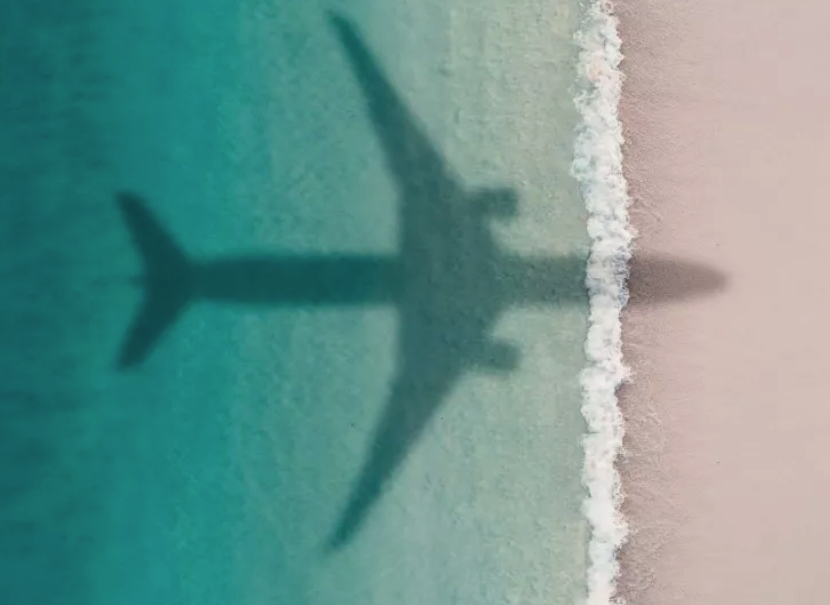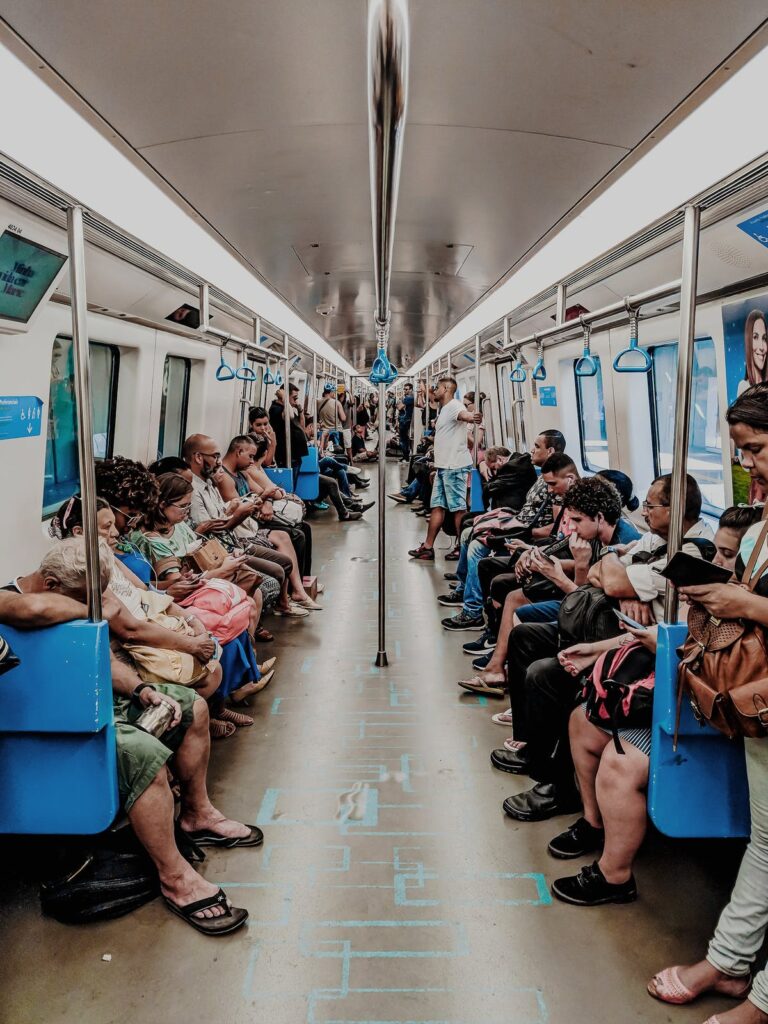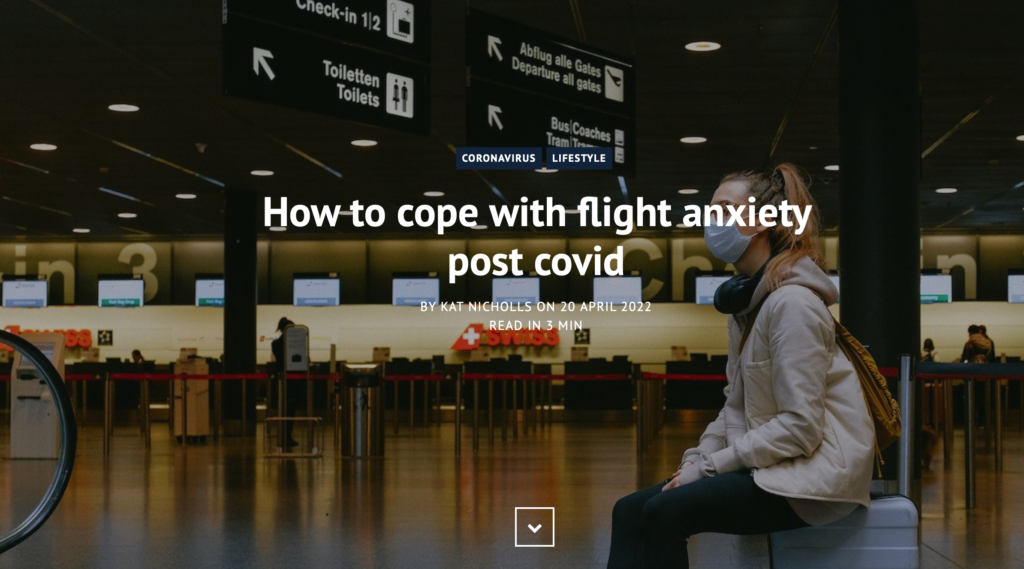Virtual Reality Exposure for Overcoming Fear of Flying
Virutal Reality Medical Center, serving our patients with Virtual Reality for the past 25 years. Contact us at frontoffice@vrphobia.com.

Virutal Reality Medical Center, serving our patients with Virtual Reality for the past 25 years. Contact us at frontoffice@vrphobia.com.

Exposure therapy is the gold standard for teaching patients with agoraphobia the coping skills they need. Dr. Cassiday and Dr. Wiederhold stated that assisting patients with COVID-related agoraphobia begins with identifying it.

https://happiful.com/how-to-cope-with-flight-anxiety-post-covid/
During the pandemic, most travel was restricted. A lot of us were confined to our homes or the occasional local walk and for some this became a comfort zone of sorts….

Virtual Reality may provide a solution for many.
Used in the U.S., Europe and Asia for over 25 years, Virtual Reality Exposure Therapy offers
a bridge between the imaginal world and the real world setting that has been shown to be
a more comfortable and effective starting point for many seeking to overcome their fears and
phobias. For more information, contact us at frontoffice@vrphobia.com
Virtual Reality Exposure Helps Overcome Fears
“Last September, my husband and I celebrated our 25th wedding anniversary and flew from California to Vermont. This was the first time I had flown in years.”
Like many people with aviophobia, Gaustad hadn’t always been afraid of flying. “We actually flew quite a bit. But on a flight to Las Vegas, our plane hit a few air pockets… enough turbulence to throw things around a bit… and although everything turned out okay, I got real real panicky and said, ‘I’m not going to be able to do this again.'” Sure enough, Gaustad and her family traveled by car, bus or train throughout the next decade.
Knowing the anniversary trip was coming up, Gaustad decided to do something about her phobia and learned that virtual reality therapy was available through her company’s employee benefits. “I only met with Brenda seven or eight times before the therapy worked on me,” she recalls. “In fact, before the sessions were completely over, I had already booked our flights to Vermont.”
“Yes I did feel sort of weird when I wasn’t flying, like there was someting wrong with me,” Gaustad admits. “It was important that my husband understood my problem. Be patient and work through this together.”
Contact us at frontoffice@vrphobia.com to learn more.
The Pain Practitioner interviewed Dr. Brenda K Wiederhold, CEO of Interactive Media Institute, a 501c3
and President of the Virtual Reality Medical Center, a California Medical Corporation.
VRMC develops VR environments, conducts clinical research studies using VR, AR, medical devices,
biosensors and pharmaceuticals in conjunction with traditional behavioral healthcare and provides patient
services at its private clinic on the Scripps Memorial Hospital Campus in La Jolla, California.
The Virtual Reality Medical Center and nonprofit affiliate, Interactive Media Institute, recently published the article, “Using Virtual Reality to Mobilize Health Care: Mobile Virtual Reality Technology for Attenuation of Anxiety and Pain” in the January Issue of IEEE Consumer Electronics Magazine. The article summarizes the use of virtual reality as a tool for pain distraction and stress reduction in patients. This tool has been used to treat phobias, stress disorders, distract from surgical pain, and help overcome chronic pain. As a mobile healthcare platform, virtual reality and related technologies are changing the face of healthcare services by increasing access, efficiency, and effectiveness.
For the full text, please visit: http://ieeexplore.ieee.org/document/8197481/
Please direct any questions regarding this article to Dr. Brenda K. Wiederhold at frontoffice@vrphobia.com
Wiederhold BK, Miller IT, Wiederhold MD. Using Virtual Reality to Mobilize Health Care: Mobile Virtual Reality Technology for Attenuation of Anxiety and Pain. IEEE Consumer Electronics Magazine. 2018 Jan;7(1):106-9.
“It started when the plane took off.”
Keely Moore isn’t afraid of a plane crash. It’s the airplane cabin closing in on her.
“I just felt kind of trapped.”
Keely suffers from panic attacks—intense unexpected episodes of fear. The attacks trigger severe physical reactions including, racing heart, chest pains, and dizziness. The attack strike terror in Keely’s mind.
“You know the fear of dying, not knowing what’s going on”
The real world situation is too overwhelming for a lot of people.
So in virtual reality, we can put them in near real-world situations, have them experience that fear, teach them coping mechanisms, also teach them that those feelings aren’t dangerous.
Keely’s nine flights virtual flights have paid off. “It just feels more like excitement than anxiety.”
For more information on Keely’s story click here.
I had a normal childhood. One of my favorite places in our hometown was our bird farm, where I thought it was very cool to go hang out with birds and touch them. I cannot imagine this anymore.
All of this was until I had a very bad experience one day. I was nine. We were in this park and someone dumped a bag of birdseed in front of me. All of a sudden there I was engulfed in a cloud of sparrows. I couldn’t see anything except brown-white feathers everywhere. And I couldn’t hear anything except for chirping, frantic wing flapping.
I started to feel like I couldn’t breathe. To me this felt like it went on for tens of minutes, even though talking to Brenda, I realized it must have actually been a couple of seconds.
I was really shaken. My parents were like, “Oh, poor baby, let’s go and take her out for some ice cream.” And we did. They sat me down and put some ice cream in front of me. And, a very bold pigeon landed in my plate and started flapping around. There were feathers everywhere and the sound that terrified me a couple of seconds ago was back.
I think that was what cemented the connection between birds and danger in my mind. I think I’ve had this phobia ever since.
When we walk around Palo Alto, we have to take a special route to avoid houses with any chicken coops.
Neha’s Boyfriend
When we walk around in the city, and you see a bird on the sidewalk, you squeeze my hand really tightly and cry.
Neha’s Sister
That time you ran out of the kitchen, screaming and sweating and crying, and it was because there was a feather on the floor.
Neha’s Mom
My mother sent out an email to all of her doctor friends saying, “My daughter runs into traffic to escape pigeons. Can anyone help us?” The answer we got was VR therapy.
I thought, “That sounds made up, and kinda like sci-fi.”
————————————————————————————————————
I can deal with a penguin maybe, a video of a penguin
Neha
Even as a part of the process, there was an option to stop. So I never felt like, “Oh my God, I can’t take it anymore.” It was always under control. It was never something that I felt like I had to get out of immediately.
My goal was to not have bird phobia interrupt my daily life. I wanted to walk within 10 feet of a bird.
If I’m being perfectly honest, I definitely still pay attention to birds. “Oh there’s a bird near me, I’m going to start my breathing exercises.” But, I can function like normal.
For more information on Neha’s story, click here.
By the time I decided to do Virtual Reality Therapy I had done most everything else I could possibly do that was offered. I had done:
At the time, the closest Virtual Reality Medical Office to my home was in San Diego, an eleven-hour car ride away. I had never had a problem flying until 1994, when my family and I boarded a small, general aviation plane for a tour over the Grand Canyon. While the plane was built for a fewer amount of people, we were packed into it like sardines. The plane ride was an hour’s worth of bumps, hits and jolts. It felt like the plane wanted to drop out of the sky under the weight of its many passengers and I was in a blind panic the entire time. It was this experience that imprinted a bad belief system and distorted view of flying in my head.
When the plane finally touched down, I got out of the plane and kissed the ground. Literally, the first words that came out of my mouth were “My life has been changed forever” and for seven years, that statement was true. While I continued to fly after that incident, it was never the same. For instance, when I had travel plans that involved flying, I would begin having anticipatory anxiety about three weeks before the scheduled flight. I would lose sleep. I would have nightmares. I would obsess about the flight.
My mind couldn’t think about anything else BUT the flight. My thought process would be filled with “what if’s.” It was so bad that by the time the day of travel came around, I emotionally didn’t have anything left over for the actual flight. My desire and drive and inner-strength for flying were completely zapped and spent. There was nothing emotionally left over for me to push through the actual flight. I felt paralyzed by the fear.
On one occasion, after I had boarded a plane with my two children and just before the Flight Attendant closed the door to the aircraft, I bolted off the plane leaving my children behind to fly on without me. I will never forget the tears and look of disappointment on their faces. At that point, I stopped flying all together for a number of years. I was exhausted and I was tired of putting my family through this unforgiving process each and every time we wanted to fly someplace.
Then, I found Virtual Reality Therapy. For me, because of the nature of the feedback I received during the VRT sessions, I was able to identify my “flying rough spots” easier. Virtual Reality Therapy gave me more concrete feedback about what I, as a nervous flyer, needed to work through to begin flying again. Because the “fear” had this “invisible hold” on me, Virtual Reality Therapy gave me a realistic and physiological perspective about myself that I could grasp and wrap my mind around so that I could actually understand what it was I needed to do to progress. Working yourself out of fear to the point where you can fly without anxiety or panic is a process that is unique to each person. Whatever you do, don’t stop trying – even if it seems nothing is working. In the long run, it will all pay off.
First, you need to be committed to finding a “cure” for yourself. Fear of flying is the type of thing that will creep back into your life if you don’t keep it in check. Therefore, don’t fly less because of the fear, FLY MORE! Fly as often as you possibly can. By flying more, you will be giving yourself a chance to purge your old belief system. By flying more, you will be giving yourself the chance to put your new belief system into place. By flying more, you will be able to prove to yourself that the old belief system simply doesn’t work any longer.
Take all the “decision making” out of flying beforehand. Do whatever you can “pre-flight” to prepare so that on the day of your flight, all the choices and decisions surrounding flying are done. There’s nothing worse for a nervous flier than to have to make even the simplest decisions and/or choices on the day of travel. The nervous flier’s mind is simply too balled up in fear at that point. For example:
For more information on Kathy’s story, click here.